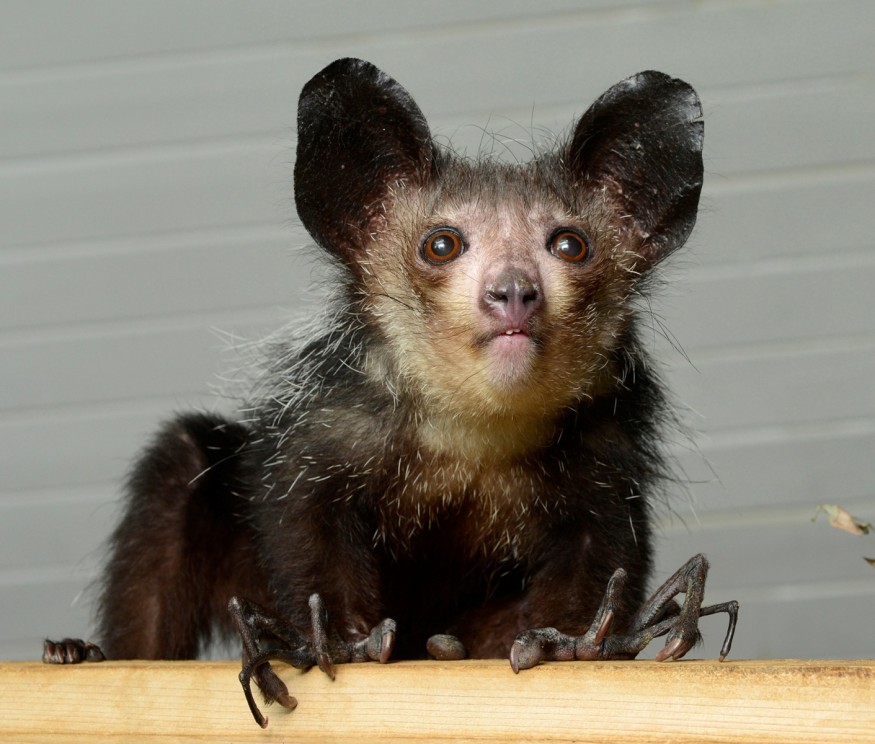
The aye-ayes, one of the oddest animals in the world, has just gotten even weirder after what the scientists have recently discovered. New research published in the American Journal of Physical Anthropology unveils the sixth 'hidden' finger of aye-ayes.
The aye-aye's extra finger, just like with the giant pandas, complements the 'missing thumb.' Hence it is called as a "pseudothumb." The scientists likewise discovered that aye-ayes had complete fingerprints. The feature is deemed to be an example of convergent and contingent evolution as both aye-ayes and pandas use pseudo thumbs to improve grasping abilities.
A species evolves an adaptive characteristic to offset a highly specific pre-existing trait that is also very constraining. Giant pandas, for example, have paws well-suited for walking but not grasping; hence, the pseudothumb emerged as a compensatory response. The pseudothumbs in aye-ayes, however, evolved because of its highly functional hands, particularly its middle finger, which is used for hunting and capturing grubs.
Biologist Adam Hartstone-Rose from North Carolina State University, the lead author of the study, said the pseudo with an extra thumb, the aye-aye's hand, is more capable of grasping objects. The finger likewise allows the animals to cling on to branches of trees as they move.
The aye-aye (Daubentonia madagascariensis) is one of nature's more absurd creations, according to the National Geographic website. Apart from having skinny and elongated middle fingers, aye-ayes have oversized ears and set of teeth in a constant state of regrowth. These house cat-size lemurs, native to Madagascar, fill an ecological niche usually filled by woodpeckers. Their brains, the biggest of any lemur relative to body mass, allow them to find the larvae's tunnels. The aye-ayes use their incisors to hold through the trunk and snatch the caterpillars using their long middle fingers.
Hartstone-Rose and NC State post-doctoral researcher Edwin Dickinson were studying aye-aye arm tendons when they stumbled upon an unknown pseudothumb. The scientists noticed that one of the muscles branched off towards a tiny anatomical structure on the wrist using a 3D digital imaging technique.
The researchers further discovered that the structure consisted of bone and cartilage supported by three distinct muscles. The team discovered the pseudofinger in both the left and right hands of male and female aye-ayes.
"The pseudo thumb can wriggle in space and exert an amount of force equivalent to almost half the aye-aye's body weight. So it would be quite useful for gripping," Hartstone-Rose said in a DailyMail article.
According to the new research, this certain setup allows aye-ayes to move the extra finger in multiple directions, unlike the human thumb. Aye-ayes are likewise able to exert nearly 2.2 pounds (one kilogram) of force when doing hand movements.
Future researchers could reinforce these findings by examining the sixth finger of the living aye-ayes in action. However, aye-ayes are considered as an endangered species according to the International Union for Conservation of Nature. The research team clarified that "no animals were sacrificed for the purposes of the study" since the aye-ayes used in the study—consisting of six adults and one child—were dead prior to their examinations.
Footage Shows Models of Aye-Aye's Pseudothumbs
(Video from DailyMail)
© 2026 NatureWorldNews.com All rights reserved. Do not reproduce without permission.





